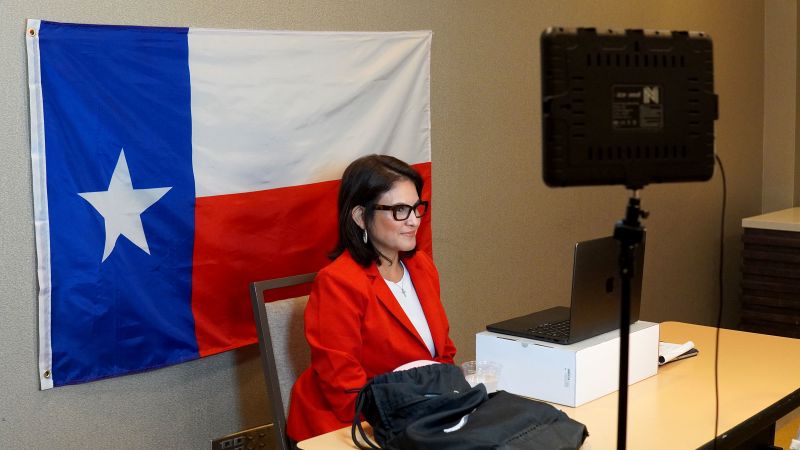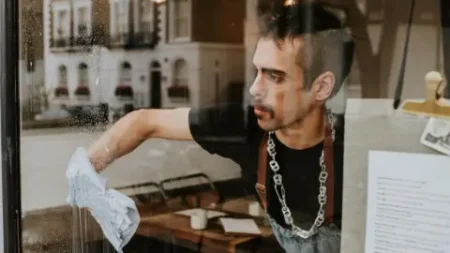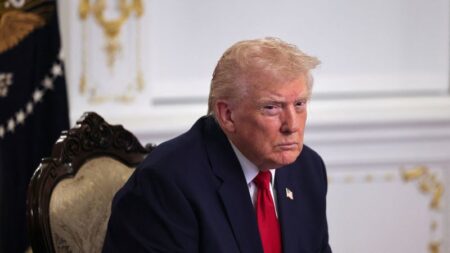In a dramatic political maneuver, Texas Democratic lawmakers fled their home state and gathered in Illinois in a strategic move aimed at obstructing a new congressional map crafted by Republicans. This map was poised to potentially grant the GOP up to five additional congressional seats, a significant gain coveted by prominent figures, including former President Donald Trump. As the Democrats set out on this mission, they faced a myriad of uncertainties regarding the implications of their actions. Questions loomed: How long would this standoff last? What kind of retaliation could be in store for them? Most importantly, would their resistance yield results?
Initially, the Democrats took solace in the logistical comforts provided by their hotel situated about an hour from Chicago, which featured amenities like laundry facilities. However, a sudden bomb threat on a Wednesday morning turned their situation into a chaotic scramble, prompting an evacuation and a shift in accommodation. This unexpected development added an additional layer of uncertainty to their already precarious situation, leaving lawmakers like State Representative Ron Reynolds humorously reflecting on their lack of clean clothes.
As they navigated this endeavor, the Democrats quickly recognized the limited time they had to make an impact. With the special legislative session scheduled to conclude in just ten days, Governor Greg Abbott indicated that he might summon the legislators back to Austin immediately following the session’s end. In a TV interview, Abbott expressed a commitment to call “special session after special session” until he achieved his political objectives.
While in exile, the Democratic lawmakers candidly acknowledged that their future was as unclear as their present situation. Gene Wu, the chairman of the House Democratic caucus, articulated that his colleagues were prepared to act decisively but were unsure of the specific actions that would play out.
Reflecting on their past experiences, many of the over 50 participating legislators recalled a similar walkout in 2021 that lasted an arduous 38 days. Some even wore commemorative T-shirts that read “Let the People Vote”, serving as a reminder of their previous efforts. This time around, the lawmakers exhibited a sense of foresight, practiced in the art of indefinite absence—learning to pack wisely, keeping communications discreet, and ensuring their families remained uninformed to avoid harassment.
Precautions, however, can easily be compromised. During an impromptu media interview, Republican State Representative Mitch Little disclosed the Illinois hotel location housing the Democrats, which prompted concern among the lawmakers. A call for action came from Little, urging supporters to fetch the absent Democrats and bring them back to Texas.
Despite facing significant challenges, the legislators emphasized that they were not on vacation; they carefully refrained from any image that might portray them in a lax manner, learning from previous missteps that had drawn criticism. With a string of media interviews and social media engagements, they sought to project a composed and deliberate presence, driven by their cause. Rep. John Bucy, with a Lone Star flag in the background, pointed out that this was the second time they had undertaken such a move and acknowledged the absence of a well-laid plan.
The social and financial toll of this protest was becoming evident. Absence from the legislature meant missed personal milestones and a significant dent in finances. The operation of the Texas Legislature, which convenes part-time and compensates lawmakers minimally, raised questions about the sustainability of this endeavor, especially given the approaching $500-a-day fines assessed for absent lawmakers. With rising tensions and a politically charged environment, many wondered how they would cover these escalating costs without failing to comply with the rules governing campaign and official funds.
Amid rising uncertainties, a Texas judge’s ruling against political fundraising by a committee associated with former presidential candidate Beto O’Rourke complicated the situation further for the Democrats. The lawmakers continued to grapple with Abbott’s threats, including suggestions that he would deploy law enforcement to bring them back to the Capitol. Faced with ambiguous legal scenarios presented by their legal advisors, they braced for the implications of Abbott’s actions, while also recognizing the broader ramifications of their standoff.
Despite the cloudy outlook, Democratic lawmakers maintained a sense of purpose, asserting that their fight extended beyond Texas. They hoped their resistance would resonate nationally, inspiring other states to take similar stands. Their plight swiftly gained traction, with California Democrats announcing a plan to redraw their congressional map to counterbalance the political dynamics in Texas, hinting at the potential for a mid-decade redistricting arms race that might radically shift political landscapes in the upcoming midterm elections.
In the face of the chaos, mounting tensions within their ranks began to yield signs of dissent among some Republicans over the tactics employed, prompting optimism among Texas Democrats. Their concerns about the implications of the ongoing political developments indicated a growing desire to find common ground amid an increasingly polarized landscape. With a sense of urgency and resilience, these lawmakers underscored the importance of drawing national attention to the issues at hand and urged the American public to recognize the systemic challenges facing democracy. In a moment fraught with difficulty, they believed that their stand—rooted











